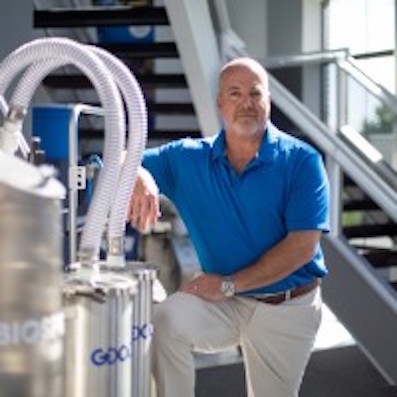 Cleanzine: your weekly cleaning and hygiene industry newsletter 18th April 2024 Issue no. 1110
Cleanzine: your weekly cleaning and hygiene industry newsletter 18th April 2024 Issue no. 1110
Your industry news - first
The original and best - for over 20 years!
We strongly recommend viewing Cleanzine full size in your web browser. Click our masthead above to visit our website version.
Supporting a healthy indoor environment is a trend that should stick around…
 by Tim Kane, president of Goodway Technologies
by Tim Kane, president of Goodway Technologies
“The importance of proper cleaning and disinfection has undoubtedly been vital for nearly every company, facility, and organisation this past year.
While the heightened awareness may eventually decline, it's likely that many people will still look to companies to take the proper steps to support a healthy indoor environment and reduce the risk of bacterial or viral outbreaks.
Many industries-such as food production and health care-had a strong focus on cleaning and sanitation before the pandemic, but that's expanding to other industries where customers or occupants want to ensure they are entering a clean environment. Some facilities already have regulations and oversight in place, but everyone needs to take the responsibility to put the proper protection in place."
Goodway Technologies is offering best practices and tips for understanding what is needed to implement an effective cleaning and disinfection plan.
Identify the level of protection needed…
It is essential to understand the level of protection required for a facility or building because there are differences between cleaning, sanitising, and disinfection.
* Cleaning: Works by removing dirt and debris from surfaces through handwashing or mechanical cleaning processes.
* Sanitising: Reduces the number of germs and bacteria on surfaces and objects to a safe level, as judged by public health standards or requirements.
* Disinfection: Destroys or inactivates the bacteria and viruses that are clearly identified on a chemical product label when used on hard, non-porous surfaces. Other means, such as steam, can also destroy or inactivate bacteria and viruses.
Water-based vs. alcohol-based…
Various surface sanitation and disinfection solutions are available, and some solutions are more appropriate for a specific market or industry.
* Water-based sanitisers and disinfectants work best for general disinfection needs when surfaces can remain wet for up to 10 minutes. For less time-sensitive applications, water-based solutions may be a better fit and offer longer ‘kill’ claim times. These require surfaces to remain wet for a more extended time but are generally more affordable solutions.
* Alcohol-based sanitisers and disinfectants are best for sensitive areas, such as electronics and high-touch areas, where quick drying is required. Spaces that require quick turnover, such as in the health care environment, will appreciate the benefit of a fast-drying time. The alcohol-based solutions are generally safe for sensitive electronics, making it an excellent solution for scales, machinery, computers, kiosks, and much more.
Overall indoor air quality…
Surface areas throughout a facility aren't the only thing that needs to be considered when creating a healthy indoor environment. Indoor air quality is also an essential piece of minimising the spread of infectious diseases or other harmful pollutants traveling throughout the airflow.
The quality of the air inside can also impact an employee's health. The Occupational Safety & Health Administration (OSHA) states that: "Poor indoor air quality can cause headaches, fatigue, concentration problems, skin rashes, and eye, nose, throat and lung irritation."
Heating and cooling systems are recognised as common sources of indoor air pollution, so routine maintenance and equipment cleaning is necessary. Ensuring your heating and cooling system is working effectively will help reduce the chances of poor indoor air quality impacting the occupants in a facility.
Additionally, portable air filtration systems utilising true HEPA filtration technologies can increase localized air quality by significant factors. Consider adding portable air cleaning systems to high-traffic areas, like conference rooms, waiting rooms, break rooms, and more.
Founded in 1966, Goodway Technologies is an ISO 9001:2015 certified company.
25th March 2021







